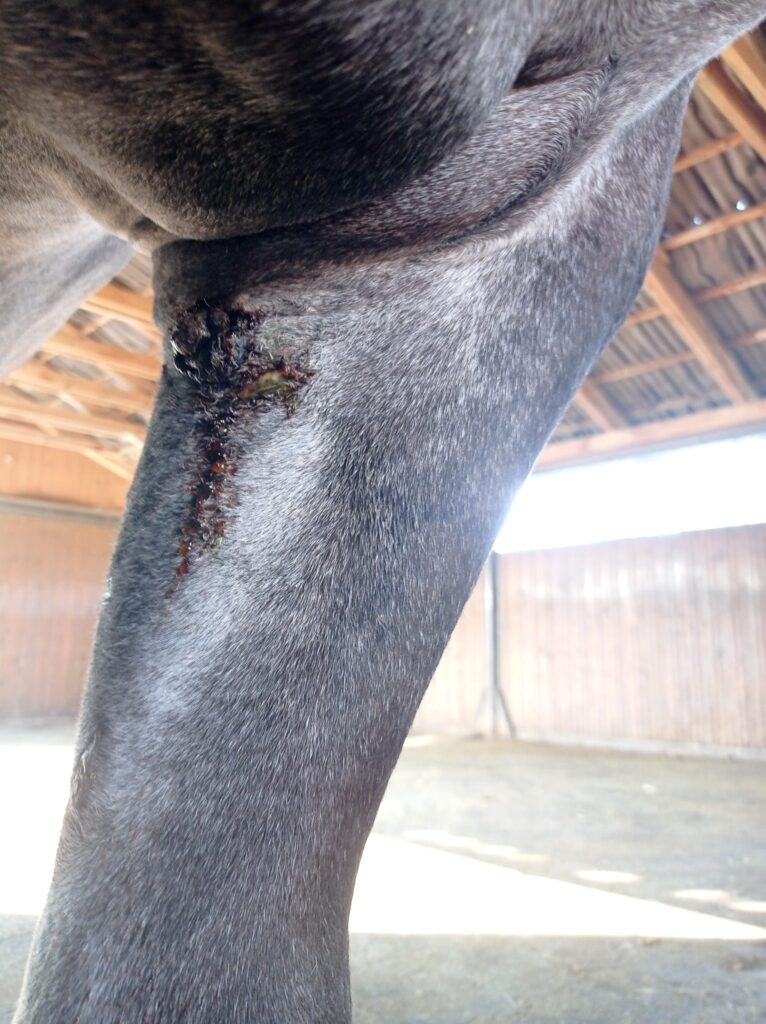
Šterc J. Použití tigilanol tiglátu při léčbě kožních novotvarů u dvou koní. Use of tigilanol tiglate in the treatment of skin neoplasms in two horses. Veterinární klinika 2025;22(5):158-164.
SOUHRN
V tomto článku je popsán průběh léčby kožních novotvarů intratumorální aplikací tigilanol tiglátu u dvou koní. První pacientka byla postižena fibroblastickým sarkoidem lokalizovaným na mediální ploše antebrachia. Druhý pacient byl postižen melanomem lokalizovaným na ventrální ploše ocasu u jeho kořene. U obou pacientů došlo po aplikaci k výrazné lokální reakci v podobě otoku a bolestivosti. Za tři dny po intratumorální aplikaci tigilanol tiglátu se objevily první příznaky nekrózy novotvaru. K úplné nekróze novotvarů došlo během několika následujících dní. K odloučení nekrotických novotvarů došlo za 11 a 12 dní po aplikaci. Po jejich odloučení zůstaly na místě léze, které se sekundárně zhojily. Výsledek sledování naznačuje, že tigilanol tiglát může mít dobré výsledky při léčbě kožních nádorů u koní. Je však nutno vzít v úvahu, že se jedná pouze o dva zdokumentované případy použití tigilanol tiglátu a pro objektivní posouzení možnosti jeho použití bude nutná rozsáhlá studie.
SUMMARY
This article describes the course of treatment of skin neoplasms by intratumoral application of tigilanol tiglate in two horses. The first patient was affected by fibroblastic sarcoid located on the medial surface of the antebrachium. The second patient was affected by melanoma located on the ventral surface of the tail near its root. Both patients experienced a significant local reaction in the form of swelling and soreness after application. Three days after the intratumoral application of tigilanol tiglate, the first signs of tumor necrosis appeared. Complete necrosis of the neoplasms occurred within the next few days. The detachment of necrotic neoplasms occurred 11 and 12 days after application. After their separation, lesions remained in place, which healed secondarily. The result of this monitoring suggests that tigilanol tiglate may have good results in the treatment of skin tumors in horses. However, it is necessary to take into account that there are only two documented cases of the use of tigilanol tiglate. A comprehensive study will be necessary for an objective assessment of the possibility of its use.*